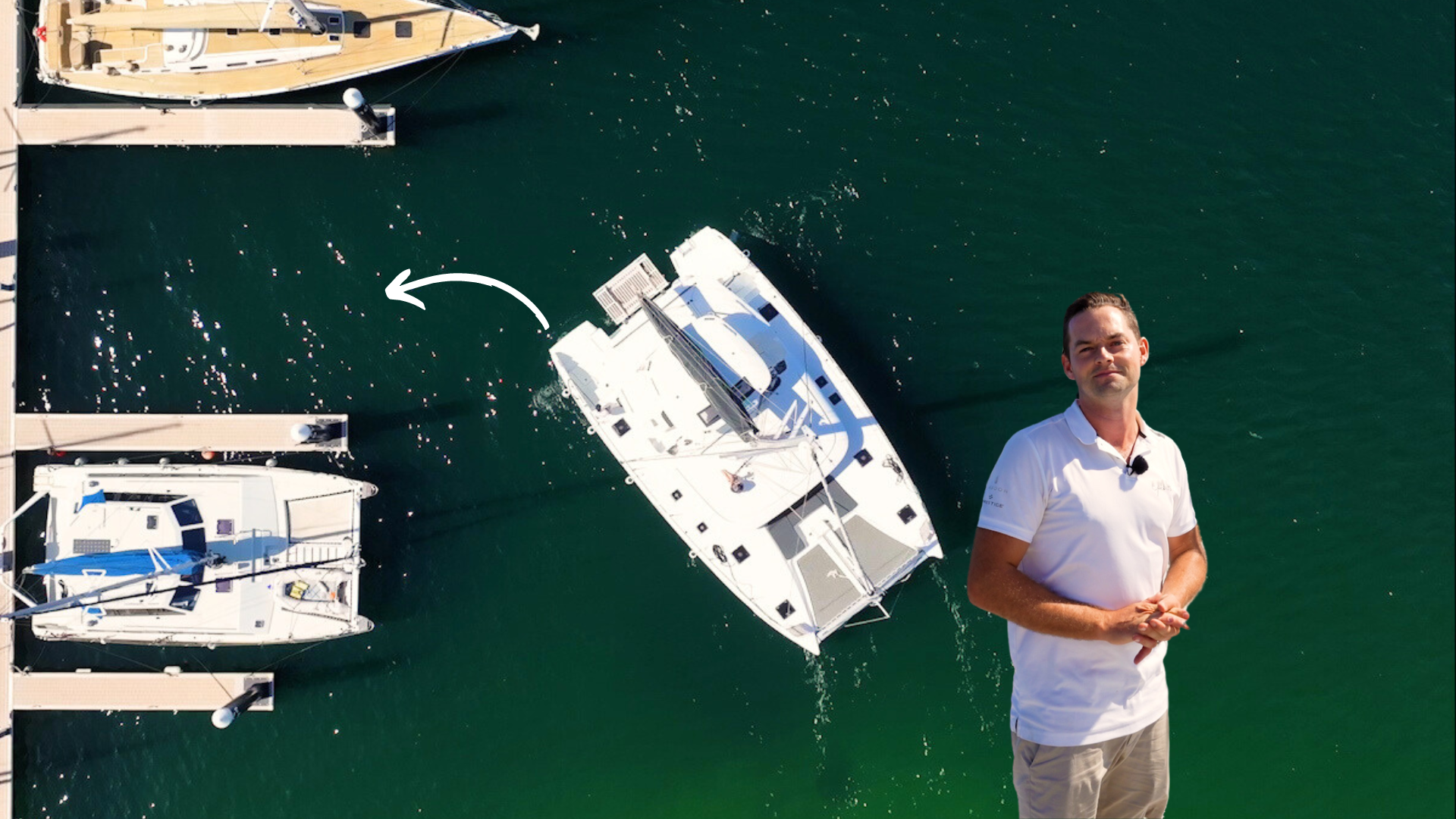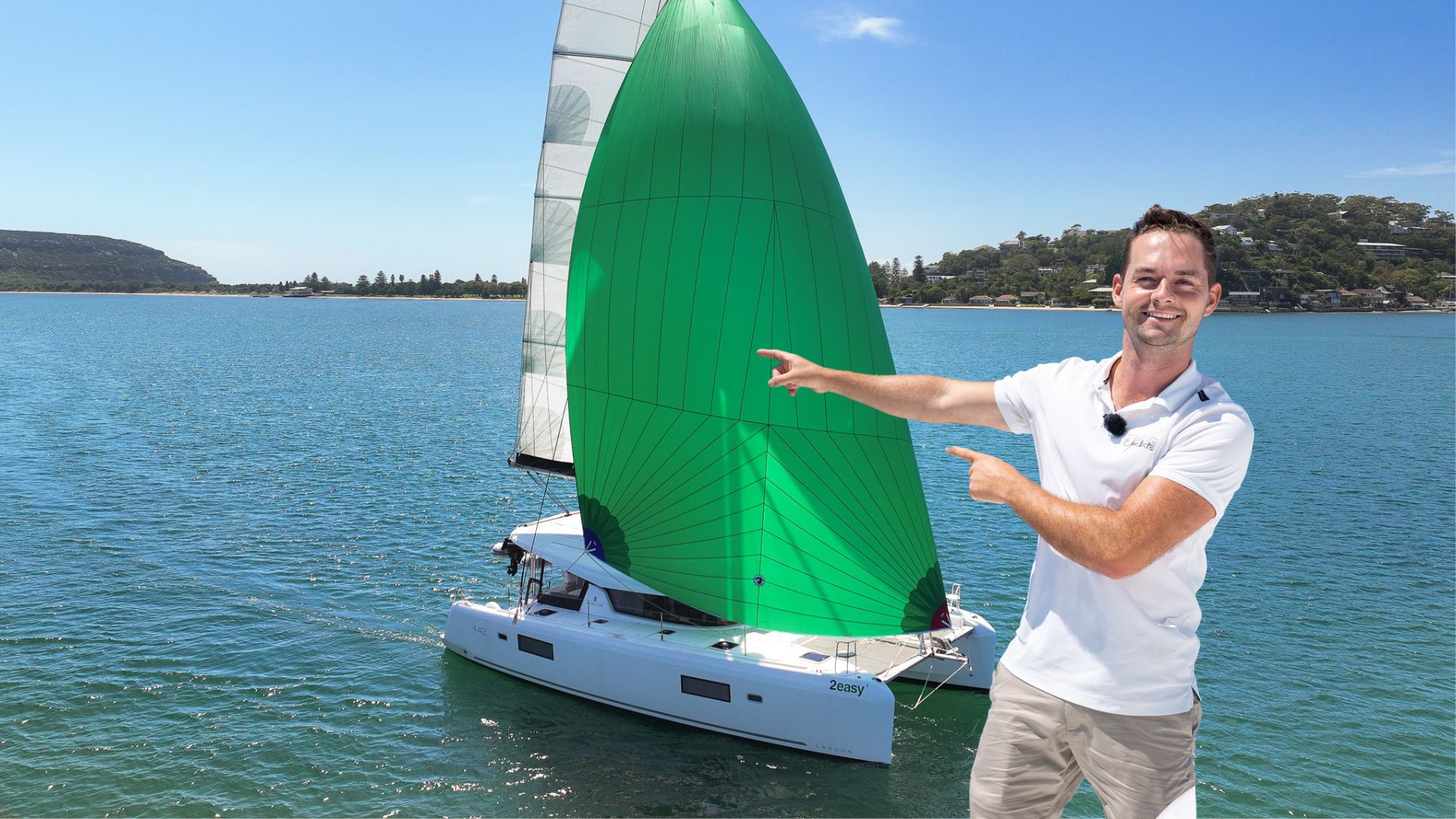Mooring Retrieval and Bridle Setup
HOW TO MOOR 101
In this episode, Joe teaches us how to approach and successfully and safely secure a catamaran to a mooring ball, as well as how to correctly set up a bridle. Joe demonstrates this as a solo sailor and also the communication involved in this between a helmsperson and crew member.

MOORING FIELD CONSIDERATIONS
- Wind & Tide – approach a mooring much like you would when you’re anchoring a boat, from downwind. Very slow, very controlled, up towards the mooring and then stop just on top or just before we get to the mooring.
- Other boats – The gaps you’re going through might be quite small. So it’s about keeping a good lookout. If you’ve got a crew member on the bow anyway, ready with a boat hook to pick up the mooring, then you can utilize them as your second pair of eyes and ears.

MOORING BALL DIFFERENCES
- Size.
- Colour – Police moorings in general, in Australia anyway, are blue. So, it’s generally best to avoid them.
- Public/ Private – look on your chart or your chartplotter for public moorings. These are set in place, serviced regularly, and available for public use.
- Weight limit – It may say on it or on the chart the weight limit. You need to make sure that the mooring is graded correctly for your vessel

SINGLE-HANDED RETRIEVAL
- Prepare the foredeck area – get the boat hook ready. Set this to maximum length
- Aim for mooring – (Halfway between centre and helm side of the catamaran). Initial approach to the mooring ball will be using the wheel and the engines in conjunction. Guiding the boat and getting it on track from downwind.
- Lock the wheel about a boat length from the mooring ball (making sure it’s centred)
- Approach the mooring using the engines – at this low speed, the only way to effectively steer the boat is using both engines in and out of gear.
- A burst of reverse – Once you lose sight of the mooring ball let the boat drift for another metre or so, so that it’s directly underneath that crossbeam. Then go into reverse just to bring the boat to a stop.
- Walk to the front, grab the boat hook, and grab the mooring ball.

MULTI-HANDED RETRIEVAL
It’s really important to brief the crew member on what you want them to do and to communicate the location of the mooring ball.
- Point to the mooring ball
- Countdown– It doesn’t matter whether you use feet, meters, inches. Using fingers signal to the helmsperson how far you are from the mooring ball.
- Hands as a fist to symbol stop the boat
- Grab the mooring ball

BRIDLE SET UP
INITIAL SECURING
- Cleat – utilise the spare anchor roller, run the line over that to the cleat on the cross beam
- Pull in all other lines
BRIDLE – Using two additional mooring lines
- Take mooring line (tie a bowline in the end if needed)
- Secure to the bow cleat
- Run the line from the bow.
- Pull through the mooring ball.
- Run back the same way and cleat.
- Repeat on other side.
- Ease all lines out and over the bow
- Adjust if needed

LEAVING THE MOORING
- Undo line 1
- Undo line 2
- Pull in lines – this is essential so they don’t go into the sail drive.
- Back to helm – quickly to take control of the boat
LATEST FROM THE INSPIRE AND LEARN SERIES
Master Catamaran Sailing with Lagoon Campus
Launching in 2025, TMG Yachts introduces the Lagoon Campus—a tailored training program designed to upskill future Lagoon catamaran owners....
How to Dock in a Crosswind on a Catamaran (in a tight space)
In this episode, join Joe Fox as he walks you through the intricate process of docking a catamaran in a tight berth with a crosswind....
How to Fly an Asymmetric Spinnaker on a Catamaran
In this guide, we delve into the intricacies of flying a Code Zero on a catamaran, specifically the Lagoon 46. Join our expert, Joe Fox, as he walks you through the setup, preparation, and manoeuvres involved in harnessing the power of this versatile...



